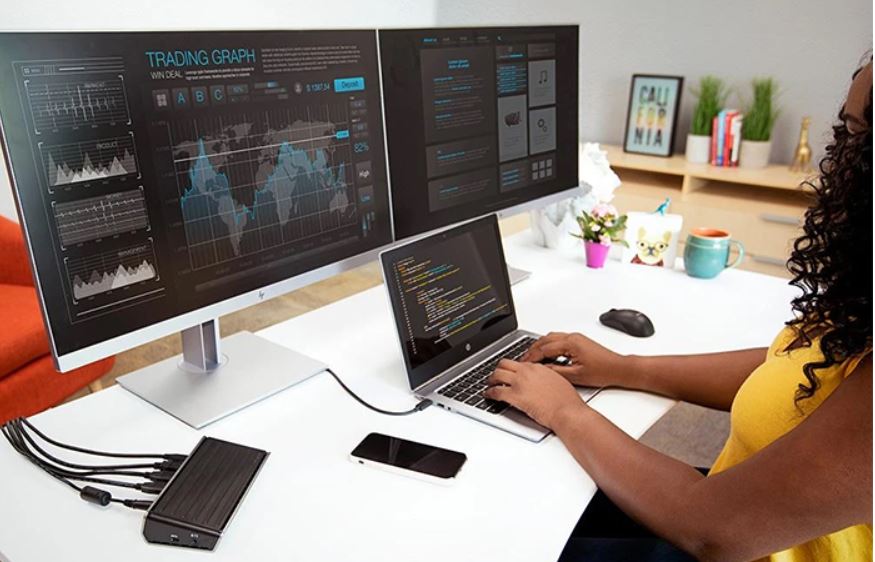
The past few months have changed everything–especially the world of work. But it’s not all bad.
Pre-pandemic, commuting to the office was an unavoidable hassle, making the daily grind even more grinding. Now that we’ve proven we can work remotely and be productive, this forced trend is likely to become a long-term reality. (At least part of the time.)
Most importantly, our global situation has made us all rethink where we work, how we work and the tools we need to be successful. Here’s why docking stations have become such a critical piece for most modern workers.
The rise of the work-home hybrid
Conservative estimates from the Global Workplace Analytics’ Work-At-Home After Covid-19 Forecast are that, “25-30% of the workforce will be working-from-home multiple days a week by the end of 2021.”
Meaning, even when it’s safe to go back to the office, many of us will still split time between our worksteads and our homesteads.
Having portable support for the laptops and cloud applications that make this split possible is what a docking station does best.
While the concept of the docking station has stayed steady over the years, its primary function has shifted. Used to be, docking stations were a “nice to have” addition that made hot-desking within the office easier. Now, this “need to have” equipment empowers employees who have been asked to move between work and home.
Increased demand for work-from-home stations
More companies are staggering their workforce in order to maintain social distancing guidelines or asking employees to come in once a week. The majority are opening the office on an as-needed basis only, asking most of their teams to work from home almost exclusively.
It’s a welcome change for the vast majority. Webinar polling results from tech accessories leader Targus showed that 94% of professionals polled wanted to work from home at least some of the time. In other words, remote working probably isn’t going anywhere.
Yet making the move back and forth with a desktop would be difficult, no doubt. And while docking stations have steadfastly supported that kind of mobility, the fact remains that if employees are to successfully work remotely through or beyond this pandemic, businesses can no longer neglect their requests for home working stations.
More need for more connections
Effective home working stations require docking equipment that’s secure and advanced enough to support the tools employees use most.
Docking stations serve as the command centres for those essentials, supporting things like an external monitor, a mouse and keyboard, external hard drives full of files and integrated power-charging all from one dock.
As the need for additional connections and ports grows, docking stations like the DOCK419 are evolving to meet the demands of the workday while remaining compact and lightweight enough to take these laptop-workstations on the go.
Focus on at-home entertainment
As of late, our homes have taken the place of children’s nurseries, restaurants, cinemas, and more. Suddenly, our only sources of entertainment have ended at the perimeter of our properties. And you know what they say about all work and no play!
Thankfully, docking stations also create an opportunity to multiply the uses of your home-desktop setup. Plug your work laptop during the duration of the work day, and then at 5:30 switch in your personal laptop, transforming it into a gaming/media/personal computing station.
If the past few months have shown us anything, it’s that most of us don’t need to exclusively work at our workplaces to get the job done. But having the ability to effectively knock out deadlines in-office or at your home office takes certain tools. Docking stations are helping the workforce adapt to the unknowns, and making work-life a little simpler in the process.